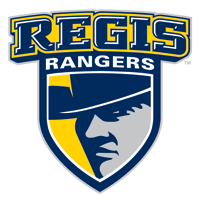The State of California has asked the University of California to lead an expansion of a smartphone-based COVID-19 exposure notification system recently tested on seven University of California campuses. Under this state program, UC San Diego Health researchers and entrepreneurs who developed and led the pilot program will be charged with expanding the program for the state.
The notification system, called CA Notify, which will officially launch on December 10, allows people who sign up for the program to receive automatic notifications on their smartphones if the user has a high-risk exposure to other registered users who are diagnosed with COVID. 19. As part of the privacy-first approach, users decide whether they want to share their own verified positive test result with the system and with other users. The technology does not store location information. Furthermore, user identities are not shared.
The notification system asks users who receive an alert to isolate themselves and search for clinical resources, which are key to limiting the spread of COVID-19. The system uses Google / Apple Exposure Notification Technology (GAEN).
“With the rapid increase in COVID-19 cases, we need all possible tools to protect our communities. We applaud the state for expanding this scalable system so that all people living in California have another way to be informed about potential exposures as quickly as possible, ”said Dr. Carrie L. Byington, Executive Vice President of Health, University of California and an infectious disease expert. "We are pleased that the University of California Health can be a resource for pilot testing and now for expansion management."
Due to its critical role in testing CA Notify, UC San Diego Health has a contract to provide infrastructure, education, and support for the exposure notification system. Support includes a call center and a public website. The call center will answer questions about the mobile tools and how they work on Google and Apple devices. Representatives from the call center and website provide assistance in multiple languages, including Spanish and Chinese.
“Our pilot experience, which began at UC San Diego and expanded to other UC campuses, showed that this technology was effective in identifying exposed people early for quarantine and testing, and in helping to keep our communities as good as possible. safe as possible, ”said Dr. Christopher Longhurst, chief information officer, UC San Diego Health. “This free and reliable smartphone technology can help all Californians. As we enter a new wave of pandemic, and hopefully final, now more than ever is the time to use all possible tools to curb the spread of the virus. ”
UC San Diego launched a pilot program for the state this fall to test the system and teamed up with UC San Francisco. After the initial phase, California public health authorities authorized the participation of additional UC locations (UC Berkeley, UC Davis, UCLA, UC Riverside, and UC Santa Barbara) to allow for the enrollment of a broader and demographically diverse group of students, faculty and staff. Although the software does not allow user tracking, the UC researchers for the study estimated that more than 20,000 users activated the software during the pilot program.
About the technology
Google / Apple technology uses Bluetooth to communicate with other nearby Bluetooth-enabled devices, such as the smartphones of people traveling on an airplane at the same time, make line up at a grocery store or share space within a classroom or dorm. When a person chooses to use the Google / Apple notification system, the user's phone broadcasts a random identification number (ID) to other phones in the area. When telephones are within 6 feet of each other, they record each other's identifications, with no names or locations attached.



Be First to Comment